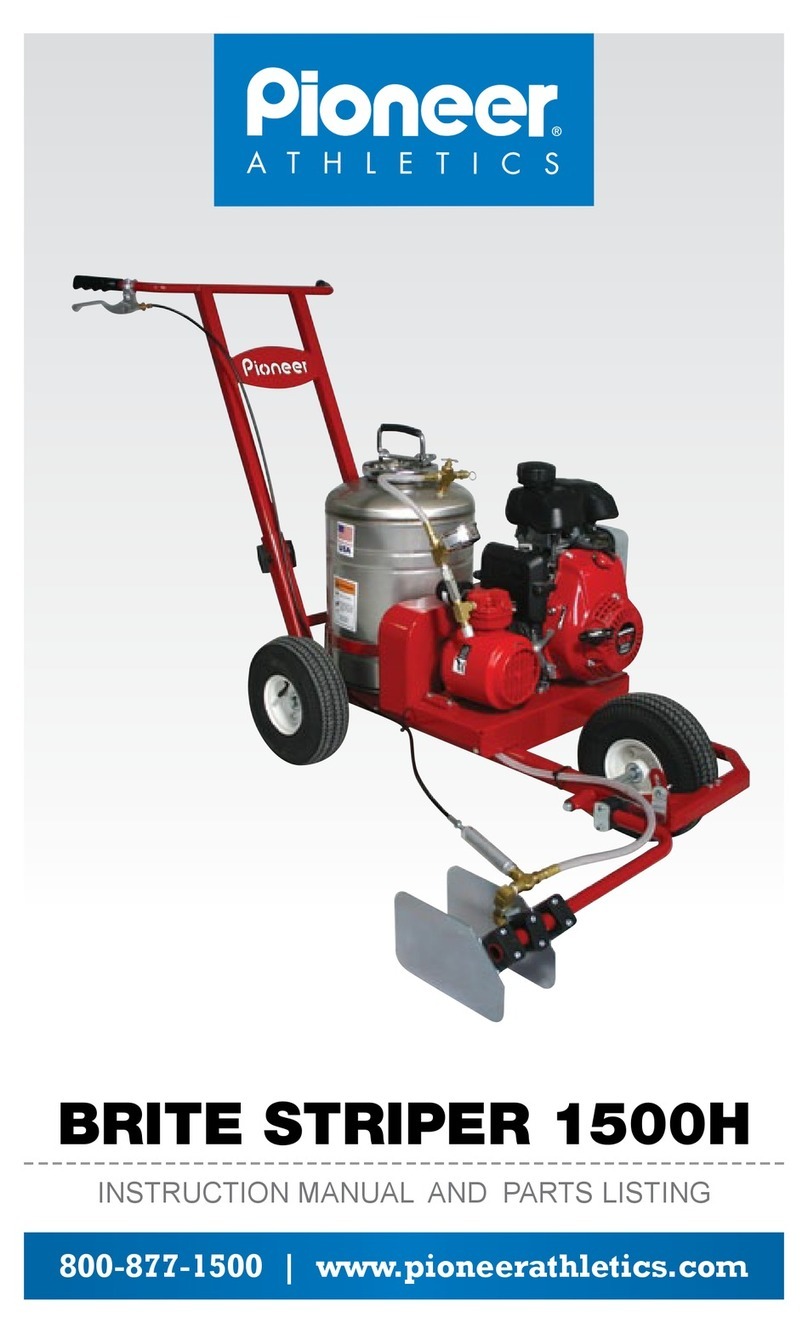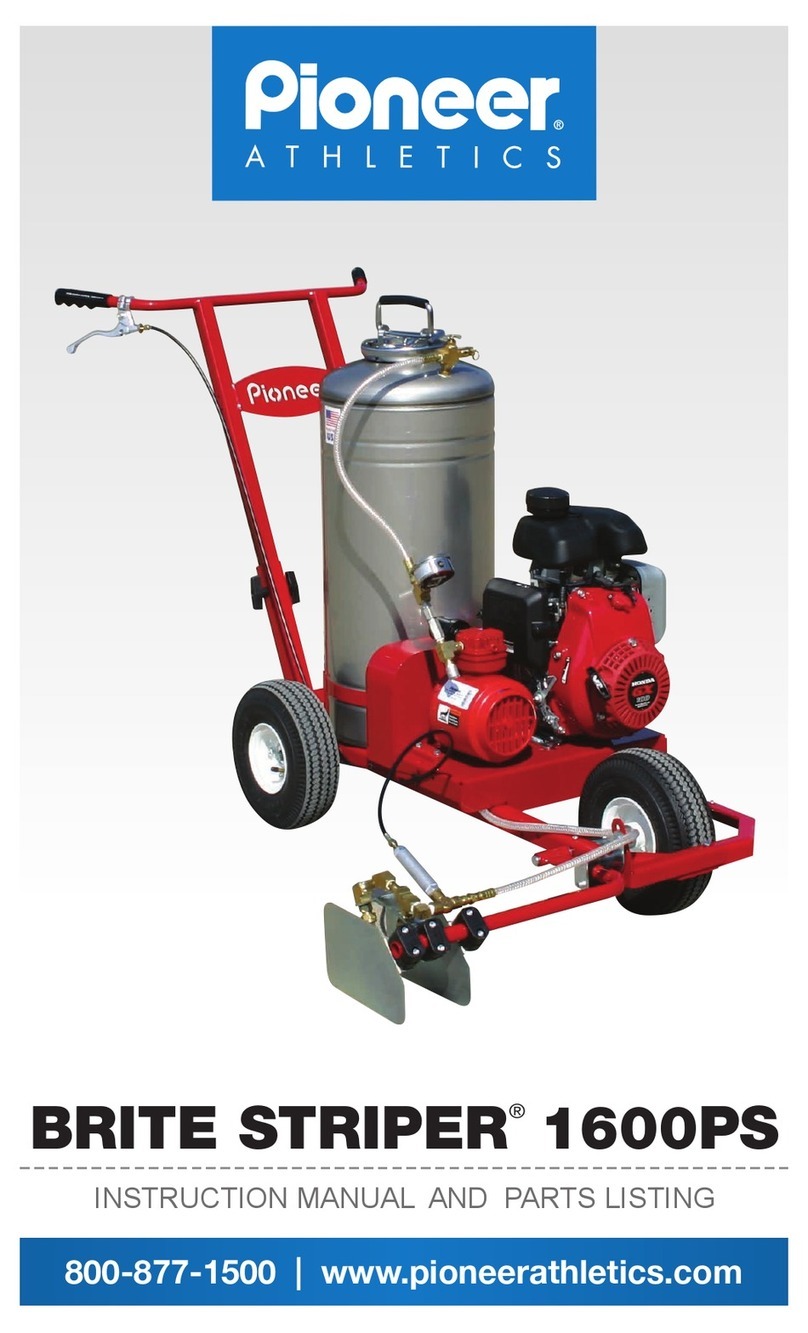2021 5Rev K
death. All slopes require extra caution. If you feel
uneasy on the slope; do not travel on it.
REMINDER: Only operate on slopes of 15 degrees or
less.
Use extreme caution when operating on slopes.
•Be extremely careful changing directions on a
slope. Slow down.
•Do not operate where the unit could slip or tip.
•Turn slowly.
•Turn on the most level part of the slope.
•To maximize traction, it is better to turn the
front of the unit uphill, rather than downhill. If
drive tires lose traction, steering control is lost
which could cause serious injury or death.
•If it becomes necessary to turn downhill, turn
slowly and gradually, if possible.
Do not remove or modify the stabilizer wheels.
Watch for holes, ruts, bumps, rocks or other
hidden objects. Uneven terrain could overturn the
unit. Tall grass can hide obstacles.
Remove obstacles such as rocks, tree limbs, etc.
Keep all movement on slopes slow and gradual.
Do not make sudden changes in speed or direction.
Avoid starting and stopping on a slope. If tires
lose traction, proceed slowly straight down the
slope.
Operate a safe distance (minimum of 10 feet)
away from drop-offs, retaining walls, drainage
ditches, embankments, water, and other types of
hazards to avoid a wheel dropping over the edge or
to avoid the ground from breaking away. This will
reduce the risk of the unit suddenly rolling over
causing serious injury or death.
Slippery conditions reduce traction which could
cause sliding and loss of control.
Do not try to stabilize the unit by putting your
foot on the ground.
When operating on slopes, if the unit’s tires lose
traction, disengage all cleaning activity, place the
steering control levers in the park brake position,
stop the engine, remove the ignition switch key,
and get help.
Never make sudden starts, stops, turns, or
reversals of direction, especially when maneuvering
on slopes. The steering is designed for sensitive
response. Rapid movement of the control levers in
either direction could result in an action that can
cause serious injury.
Never stop suddenly while backing down slopes.
This action may result in a reaction of the unit that
can cause serious physical injury.
This unit capable of operating horizontally
(traverse) on moderately steep slopes. When
operating on slopes up to 15 degrees, be aware of
any conditions that may cause the drive tires to lose
traction resulting in a possible loss of control. An
operator should not operate on a slope unless
thoroughly familiar with the equipment.
Do not operate on slopes greater than 15 degrees.
Refer to the Slope Guide, when determining the
degree of slope.
It is strongly recommended that the operator drive
of the slope slowly, using extreme caution, if any
sign of loss of traction is detected. Wait until the
condition that caused the problem is resolved
before attempting to operate on the slope again.
Terrain conditions can affect traction resulting in
possible loss of control. Some of the conditions to
be aware of are:
•Wet terrain
•Depressions in the ground; i.e. holes, ruts,
washouts
•Mounds of dirt
•Soil type; i.e., sand, loose dirt, gravel, clay
•Grass type, density, and height
•Tire pressure
Another consideration for safety on slopes is to be
aware of what is located at the bottom of the slope.
Extreme caution should be used when there is a
hazard located at the bottom of the slope.
These are just a few examples of situations when
caution must be used when operating on a slope.
There are many other possibilities too numerous to
mention. Just remember to always exercise extreme
caution when operating on any slope.
The ROPS may minimize chance of injury or
death from rollover. The seat belt must be fastened
while operating with a ROPS in the raised and
secured position. Both retaining pins and hair pins
must be installed. Failure to use a seat belt with
ROPS may result in serious injury in the event of a
roll over.
Children





























